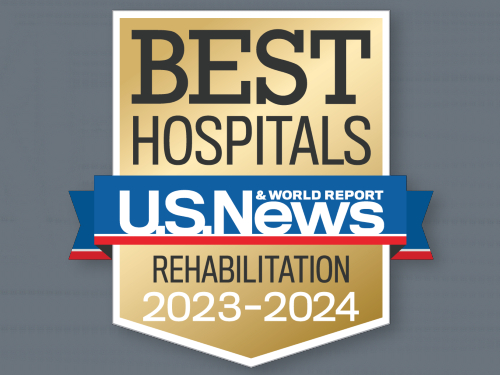Concussions are increasingly common in children and adolescents as parents encourage their children to engage in competitive sports at an earlier age. While neurologists are treating more head injuries, clinical neuropsychologists and physical therapists are looking for new interventions to improve rehabilitation outcomes.

The therapy is progressive cardiovascular intervention for reducing headache severity and improving cognition in patients who suffer persistent symptoms of concussion. In 2012, Dr. Gibbs was awarded a TIRR Memorial Hermann Innovation Award to study the effectiveness of the intervention. Innovation grants are competitive awards that make it possible for any staff member at the rehabilitation hospital to play a role in TIRR Memorial Hermann’s mission to conduct clinically inspired research that benefits rehabilitation patients.
“Traditional thought and current international guidelines on concussion recommend waiting until physical and cognitive symptoms have subsided to begin physical activity,” Dr. Gibbs says. “New evidence suggests that exercise after concussion may actually facilitate recovery. We begin progressive aerobic exercise after we receive clearance by the patient’s physician. Clinically we’re producing good results with a gradual resumption of physical activity. If symptoms worsen, we reduce the activity with resumption at a slower pace.”
Patients start off walking on the treadmill at a slow rate – less than 70% of heart rate threshold for up to 15 minutes. Exercise from that point forward is increased by five minutes each session if there is no exacerbation of baseline symptoms. Once they reach a duration of 30 minutes, intensity is increased by 5% each session according to the heart rate threshold.
“It’s important for us to discover the best interventions for getting people back to daily activities after concussion,” Dr. Gibbs says. “For the most part concussion doesn’t result in permanent disability but it can have a negative effect on productivity in terms of time spent away from school and work. For those who are struggling to resume activities, we need to have good evidence-based interventions to help them get back to activities as quickly as possible.”
Subscribe to the TIRR Memorial Hermann Journal
You!

Nationally Ranked Rehabilitation
For the 35th consecutive year, TIRR Memorial Hermann is recognized as the best rehabilitation hospital in Texas and No. 2 in the nation according to U.S. News and World Report's "Best Rehabilitation Hospitals" in America.
Learn More